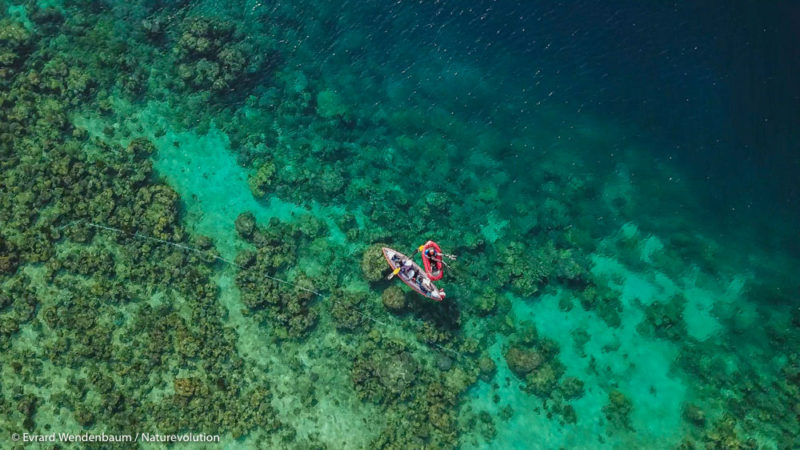At the end of April, the Naturevolution team, along with six eco-volunteers and their local partners, met in the southeast of Sulawesi Island, Indonesia, to lay the foundations for a conservation strategy for the region. After actions on the establishment of a waste management system, we continue our work with an interest in coral reefs.
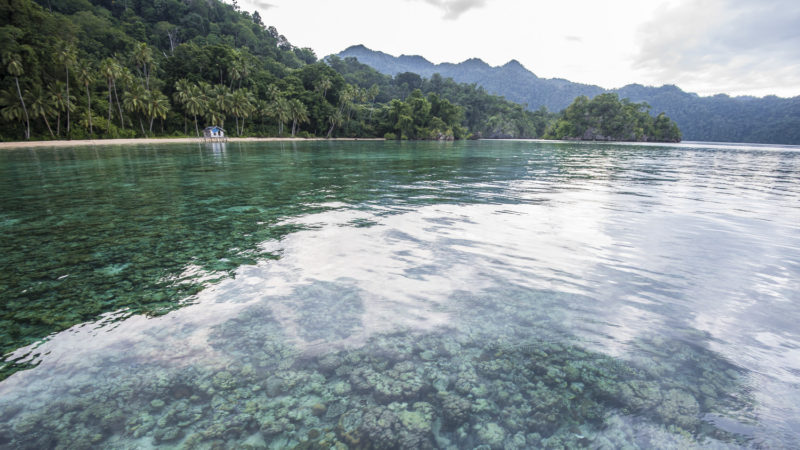
The reefs of Sulawesi
Settled now for several days in the paradisiacal bay of Matarape, a vast coastal area made up of dozens of coves, islets and beaches, still largely devoid of human presence, we are embarking on the second part of our mission: assess the condition of coral reefs of the bay, identify the threats they face, and propose solutions to preserve them in the long term.
We get into the water with a lot of excitement and also a lot of anticipation: Sulawesi is located in the heart of the Coral Triangle, an area considered to be the epicentre of the biodiversity of our oceans, including the most diverse coral species in the world. The Banda Sea, which includes Matarape Bay, is the 2nd marine area of Indonesia (even of the whole world!) the richest in terms of biodiversity.
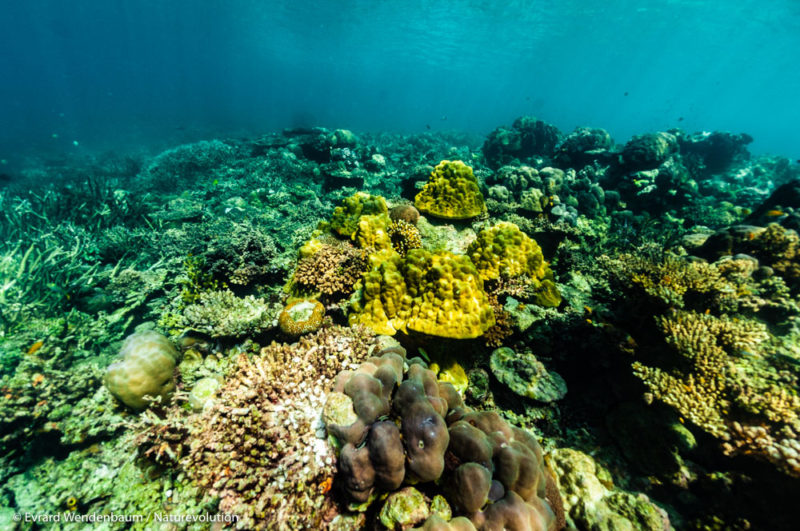
Identification of threats
Unfortunately, beyond global warming and ocean acidification, a range of local threats hang over this hotspot of marine life. Along much of the coastline, nickel mines are fast nibbling rainforests while pouring torrents of asphyxiating sediment into coastal reefs (see photos here).
At the same time, destructive fishing techniques using dynamite or potassium cyanide are still used, including over coral reefs. Some protected species, such as giant clams, sea turtles and manta rays, are still being fished, while large fishing vessels venture into marine protected areas. As for boats that dock on an island, they often anchor on the reef, damaging or even tearing off the coral.
To top it all off, plastic waste, seen on beaches, is also found in corals, where it can be a source of disease. In short, this marine paradise is in danger, and we see it as soon as we put our heads underwater: in some places, vast reefs are already damaged or even devastated.
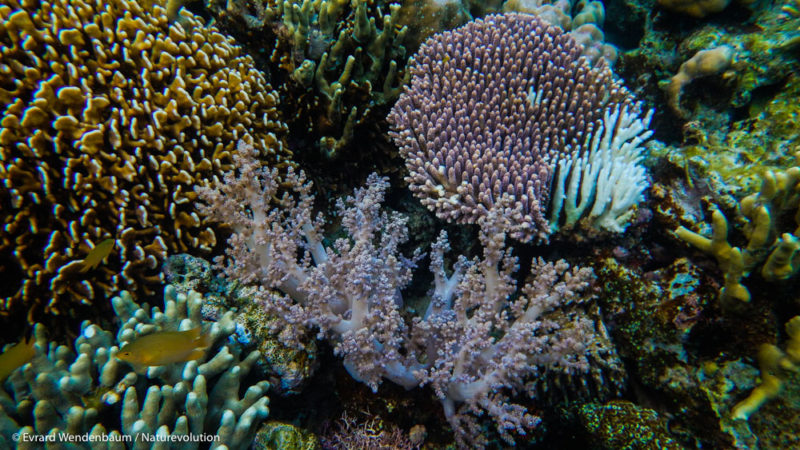
Looking closer at the reefs…
Many corals, including tabular and branch colonies, have bleached parts, indicating that polyps have expelled their symbiotic zooxanthelial algae. These bleaching phenomena, called bleaching for the resultant immaculate whiteness of the coral, are caused by a higher warming of the water than the coral can withstand. As a result of global warming, they are increasing more and more. If bleaching lasts too long, the coral polyps die in turn and the remaining coral skeleton is progressively colonized by greenish-brown algae whose flakes shake with the current. The reef then takes on a sinister appearance.
An exceptional film on coral reefs
The film Chasing Coral, currently available online, is arguably one of the most beautiful documentaries ever made about coral reefs and the recent increase in bleaching episodes. With the aim of filming time-lapses of this phenomenon, the film crew embarks us on a journey to discover the real aliens of our planet.
As for the fish, their diversity is relatively low compared to other well-known dive spots.
But what creates perhaps the most damage on some reefs is an animal with which we were unfamiliar: the Acanthasters, or Crown-of-thorns starfish . With more than a dozen arms and completely bristled with poisonous spines, their appearance does not make you want to rub it! They feed on coral, and – for reasons that remain to be clarified – proliferate on some reef ecosystems, and can destroy them in a matter of months. We found dozens of them on the beautiful reef of Labengki Island, which was almost devoid of them six months earlier. At the end of 2018, we conducted a first mission dedicated to Acanthasters.
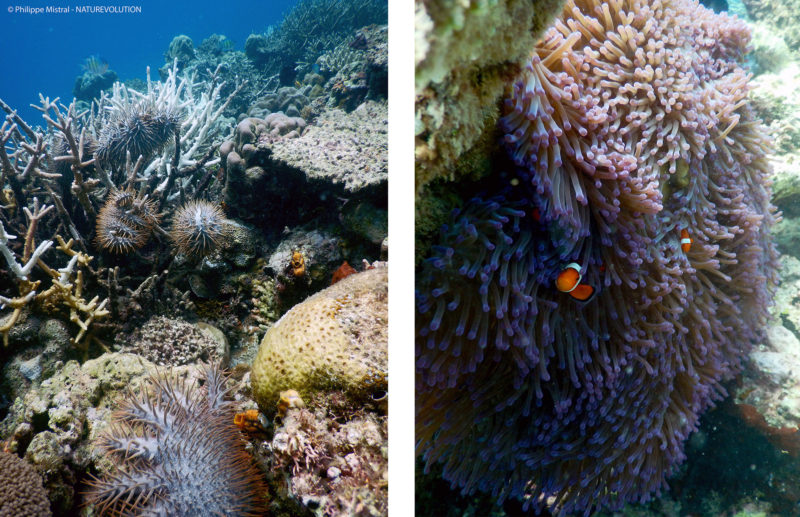
If we remain fortunately amazed by some of the reefs that are perfectly healthy and abound in colour and diversity, it is with a sense of sadness that we move above those that present the most damage. We are fortunate enough to dive among the richest reefs on the planet, but when we arrive, we too often find that they suffer severely from the impacts of our presence on Earth.
But nothing is irreversible: it is possible to act, and on several fronts.
Indeed, the resilience of the coral and the presence of many healthy coral reefs around Matarape Bay give hope for the regeneration of the damaged areas. But there is also an urgent need to put in place conservation measures to stop the degradation.
To reverse the trend, we initiated a number of actions during this mission, both with the eco-volunteers who accompanied us on the mission and with the local populations, whom we want to see at the heart of our actions. For this first year of fieldwork, we are focusing on the following activities:
- Awareness-raising
- Monitoring and observation of reefs
- Installation of anchorages
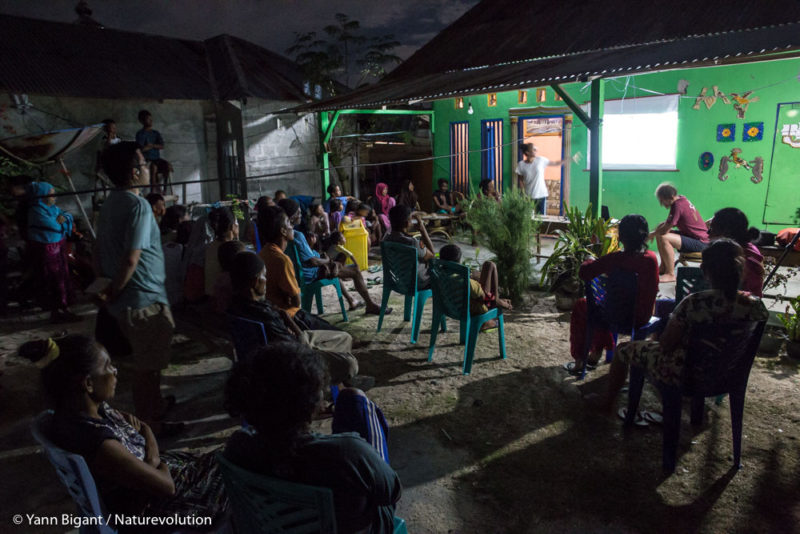
Action #1 – Awareness-raising
In the villages of Mbokita, Labengki and Molawe, we were able to explain to the population and local authorities, the importance of healthy coral reefs, as well as the local threats that directly affect these ecosystems. in fine jeopardize the traditional way of life based on fishing. On estime en effet qu’1km2 of healthy reef can produce about ten tons of fish per year.
We have also placed a strong emphasis on waste management, both in our discussions and presentations, and through collective waste collection actions. These can not only affect marine life (coral diseases, ingestion by marine animals, etc. ), but also impact the region’s potential for ecotourism development. For more information on our actions around waste, read our article: Naturevolution tackles plastic waste in Indonesia.
Our awareness-raising activities have also resulted in the installation of signs on cleaned beaches, such as Sombori Island, Labengki Beach, and Molawe Beach, advising on good practices to adopt for the preservation of the environment.
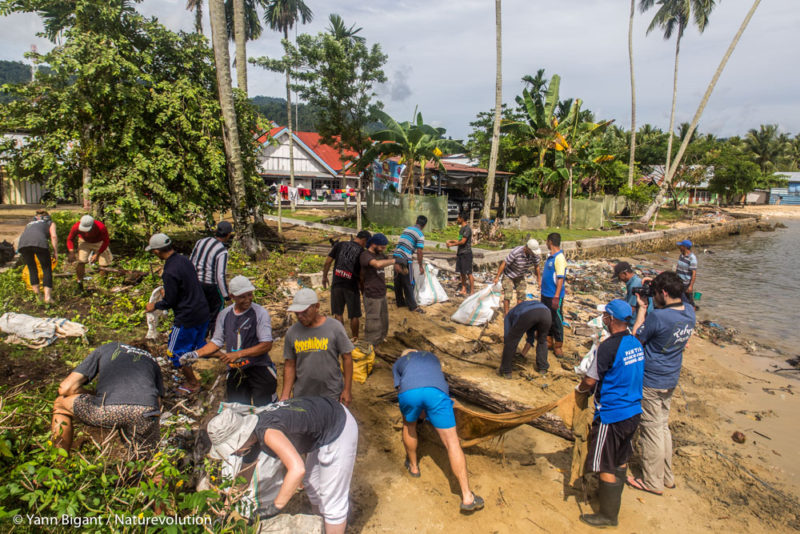
Action #2 – Monitoring and observation of coral reefs
We carried out a reef monitoring-observation using the participatory REEF-CHECK observation method in order to observe the evolution of specific reefs over the years. This method consists of 3 transects on the same 100m line, measuring in turn the presence of certain species of fish, invertebrates, and corals, as well as the state of the seabed. The species to be identified during the transects were selected by REEF-CHECK both because they allow an assessment of the health status of the reef and because they are identifiable by quickly trained volunteers.
This two-hour training, which took place one evening at the camp, gave everyone a good knowledge base and made it possible to carry out the first transects the next day. While implementation has taken longer than expected, the feedback will allow us to be more operational in future missions.
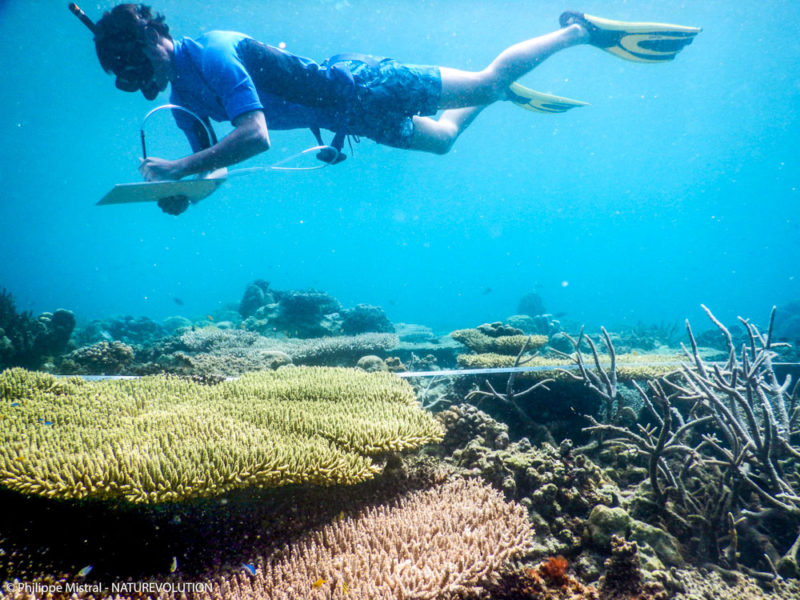
Action #3 – Setting up anchorages
We have installed mooring buoys close to the shore to prevent fishing or tourist boats from casting their anchors on the corals. These consist of a concrete block laid on a sandy bottom and connected to a surface buoy to which vessels may moor. These first tests – three moorings were laid on Labengki Island – aroused great interest from the nearest villagers.
___
All these actions were continued in the summer of 2018 for 6 weeks , and then throughout 2019. The activities have been progressively adapted as our knowledge of the field has grown.
If you would like to join us to take part, to contribute to the protection of this little paradise, and at the same time have a great time, find all the information on this page: eco-volunteering missions in Indonesia.
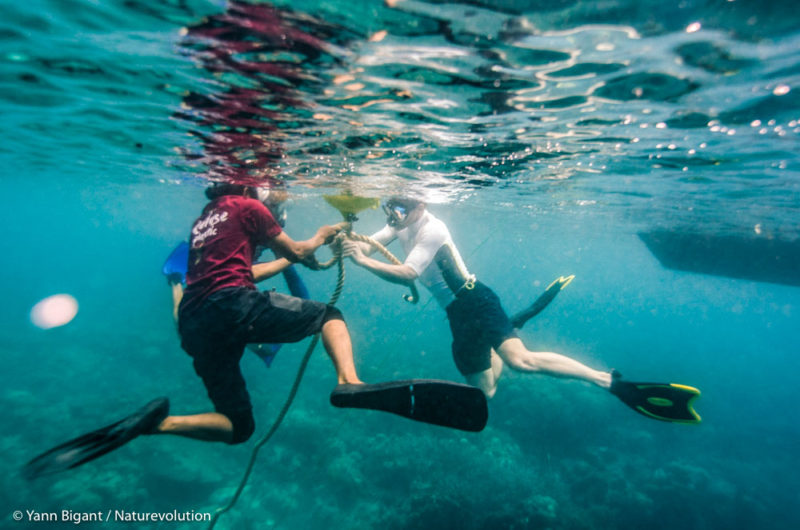
___
Thanks to Yann-Erik, Philippe, Mélanie, Sabrina, Géraldine and Ugo, ecovolunteers on this spring mission. Everyone who participates in our eco-volunteer missions – that is, maybe you! – make possible, both physically and financially, our conservation actions for the preservation of the Konawe karsts.
Continue reading to the 3rd and last article of this mission: Matarombeo, or the jungle in all its glory.
